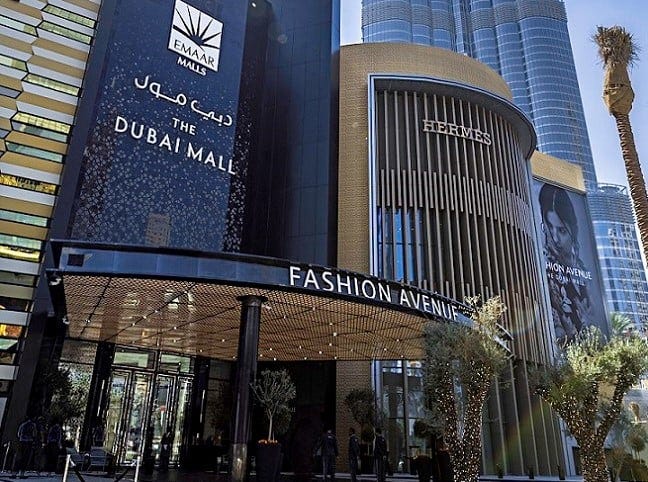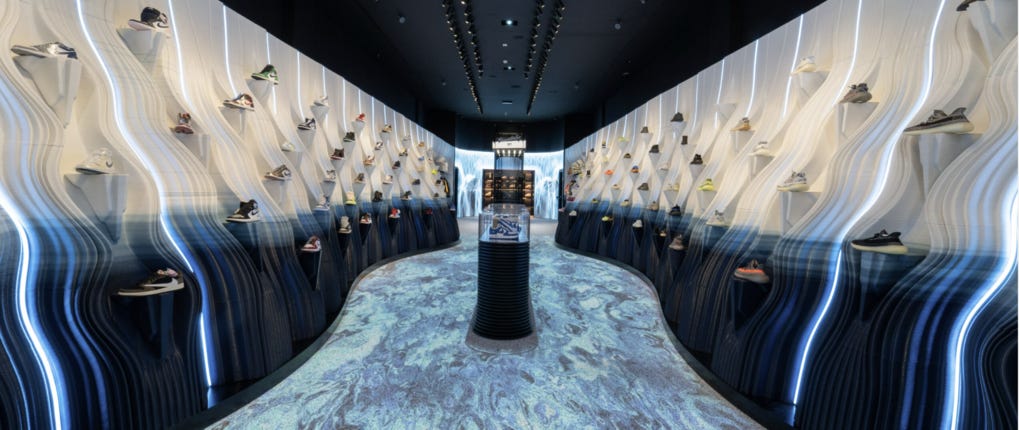The Luxury Market's Growth in the Middle East
Emerging regions may be the solution to help brands weather the luxury slowdown.
Few luxury brands are currently flourishing in the United States. Japan tourism is starting to cool off (their catastrophic weather incidents aren’t helping) and shoppers who were coming from around the world to spend money on goods aren’t doing so as much. Younger Chinese shoppers are in the midst of questioning and changing their shopping habits. Many large countries in Europe are also seeing either economic slowdowns or can only boast modest at best growth gains. Because luxury fashion cannot depend on its mainstay regions to prop up their short-term aspirational financial targets, brands must look elsewhere for top-line revenue, and Middle Eastern countries are proving to be the perfect destination.
United Arab Emirates
It’s no secret that cities within the U.A.E. have been a pinnacle of luxury and wealth for decades. Their sovereign wealth fund ($2.49 trillion) is worth more than multiple country GDPs combined and they’re always looking for various investment opportunities. Outside of the recent focus in professional sports around the world, retail is a high priority. The city of Dubai is in a mode of hyper-growth and wants to expedite this process. D33, announced two years ago by His Highness Sheikh Mohammed bin Rashid Al Maktoum, is the city’s development plan which aims to double its local GDP by 2033. The Mall of the Emirates will be undergoing a $1.3 billion renovation that will add ~215,000 square feet of retail space to house another 100 stores. The city also hosted a one-off runway for Zegna and consistently host the bi-annual Dubai Fashion Week.
Abu Dhabi is also creating a home for luxury and prioritizing activations and creating new retail customer journeys. When brands decide to expand their footprint and open a storefront here, replicating something that worked in one city probably isn’t going to work here. Shoppers have a high bar for an acceptable retail experience. Be prepared to come to market with an out of the box mindset, or hold off until you can come up with something innovative.
Saudi Arabia
Saudi Arabia holds roughly 40% of the region’s luxury market, and that percentage will grow over the next several years.1 Vision 2030, an initiative spearheaded by the country’s Public Investment Fund, is well underway with the goals of growing assets, unlocking sectors, building partnerships, and localizing knowledge. Every sector will look to expand in some way, and fashion is within their priority set. 52% of the country’s jobs in fashion are held by women and they’ve reached gender pay parity within these creative spaces. Saudi Arabia also launched their own fashion week in Riyadh in 2018 and with the help of major publications like Vogue and Women’s Wear Daily, this event has been gaining consistent traction.
Qatar
The country has had its eyes on expanding their retail presence for several years. A Business of Fashion article from 2022 stated that while the country was trying to capitalize on all the revenue the World Cup would bring in, there were doubts that Doha can create a strong enough flywheel to support luxury brands for the long term.2 Qatar proved its doubters wrong. Doha City Festival is a massive mall and entertainment complex slightly larger than Houston’s Galleria. Since the World Cup they’ve opened over 30 stores within this complex including Ralph Lauren and a remodel of Guerlain beauty. This past May, Harvey Nichols (a large multi-floor department store inside this same complex) welcomed British luxury streetwear brand Represent for a large scale experiential event where they unveiled their Spring and Summer collection and athletes, influencers, and loyal customers were all in attendance. The nation’s sovereign wealth fund and another fund they financially support have Harrods and Printemps within their respective portfolios, giving them firsthand knowledge of how to create amazing retail experiences.
Kuwait
Kuwait only holds 7% of the Middle East’s luxury market, but given that figure amounts to over a billion dollars, we can’t neglect to highlight them. “Kuwait’s luxury consumer — highly brand-conscious and sophisticated, according to Euromonitor senior consultant Hind Ali — typically shops abroad, looking for the biggest selection and newest collections. That means they have discerning tastes, says Jasmina Banda, chief strategy officer at The Chalhoub Group. ‘Kuwait’s luxury buyers are fashion-forward customers who are willing to experiment with new brands. We see it also as a market where most trends start first, before we start noticing them in the rest of the Middle East.’”3 This market is also extremely different than all those aforementioned. Since the the country doesn’t see an influx of tourism, brands can rest assured that the overwhelming majority of these purchases will be from Kuwaiti customers, a clear indication that an ROI will only be seen if marketing tactics are hyper-localized.
Forbes; The State of Arab Luxury: The Major Players Behind the Brands
Business of Fashion; Examining Qatar’s Fashion Hub Ambitions
Vogue Business; Meet the Kuwaiti luxury consumer: Savvy, sophisticated and hyper-local



